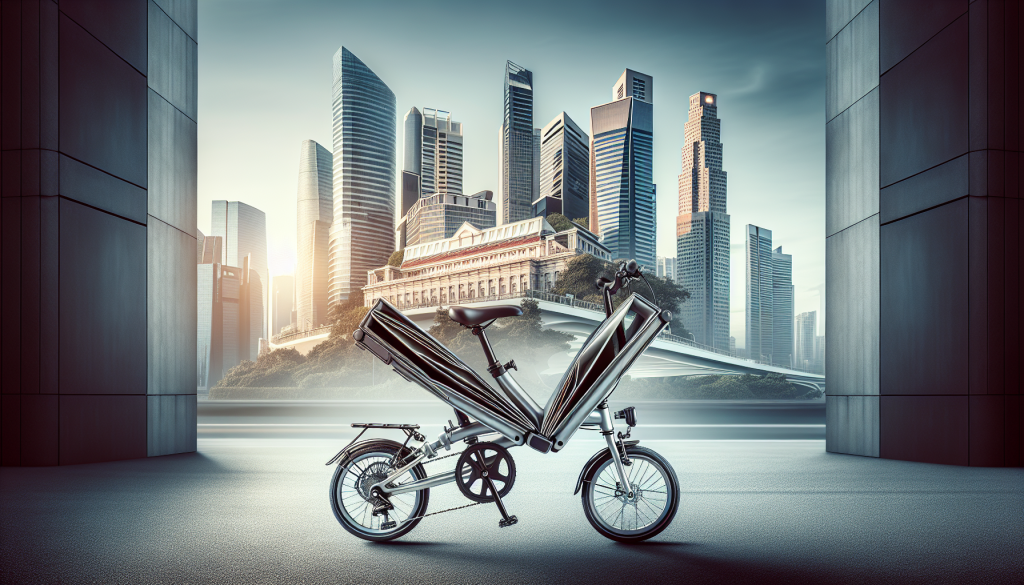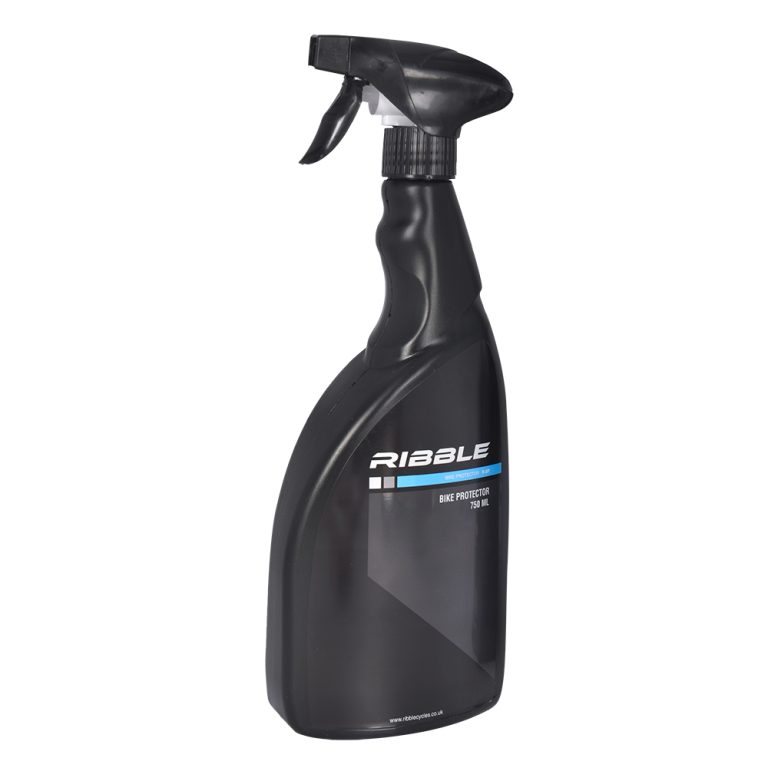Are you tired of dealing with the hassle of traditional bikes? Look no further! This comprehensive guide will introduce you to the world of folding bikes and ease your biking woes. From their compact and portable design to their versatility in navigating urban environments, folding bikes offer a convenient and efficient alternative for commuters and city dwellers. Whether you are a seasoned cyclist or a beginner, this article will provide you with everything you need to know about folding bikes. So, hop on and embark on an exciting journey into the world of folding bikes!
Table of Contents
ToggleWhy Choose a Folding Bike
Are you looking for a convenient and versatile mode of transportation that can easily fold and fit into tight spaces? Look no further than a folding bike! These compact bicycles offer a wide range of benefits, making them the perfect choice for any urban commuter or adventure enthusiast.
Benefits of Folding Bikes
Convenience and Portability
One of the most significant advantages of folding bikes is their incredible convenience and portability. These bikes are designed to fold down into a compact size, allowing you to easily carry them onto public transportation, store them in small apartments, or even tuck them away under your desk at work. Whether you’re hopping on and off buses or squeezing into crowded subway cars, a folding bike can effortlessly accompany you on your daily commute.
Versatility and Multimodal Transportation
Folding bikes are incredibly versatile, making them ideal for those who rely on a combination of different modes of transportation. When you reach your train station or bus stop, simply fold your bike and bring it on board with you. Once you arrive at your destination, unfold it, and continue your journey seamlessly. This multimodal approach to transportation not only saves time but also provides you with the freedom to explore different areas without being restricted by public transportation schedules.
Environmental and Health Benefits
Choosing a folding bike is not only a smart choice for your convenience, but it’s also a sustainable choice for the environment. By opting for a bike instead of a car, you’re significantly reducing your carbon footprint and contributing to cleaner air. Additionally, cycling offers numerous health benefits, such as improved cardiovascular fitness, increased muscle strength, and overall mental well-being. With a folding bike, you can conveniently incorporate exercise into your daily routine while reducing your impact on the environment.
Factors to Consider Before Buying a Folding Bike
Now that you’re convinced of the benefits of folding bikes, it’s time to consider some essential factors before making your purchase.
Budget
Like any other product, folding bikes come in a range of price points. Before diving into your research, determine your budget. This will help you narrow down your options and find the best bike within your price range.
Bike Weight and Frame Material
The weight and frame material of the bike are crucial factors to consider. If you plan on carrying your bike up a flight of stairs or regularly lifting it onto public transportation, a lightweight frame will be more manageable. Aluminum frames are commonly used in folding bikes due to their lightweight nature and durability. However, if you prefer a sturdier feel, steel frames are also available on certain models.
Foldability and Folding Mechanism
The whole purpose of a folding bike is its ability to fold down quickly and easily. Consider the foldability and folding mechanism of the bike you’re interested in. Some bikes fold in half, while others feature a more intricate folding mechanism. Find a folding bike that matches your needs and is simple for you to fold and unfold intuitively.
Wheel Size and Ride Quality
The wheel size of a folding bike can significantly impact its ride quality and performance. Smaller wheels provide quicker acceleration and greater maneuverability in tight spaces, making them ideal for urban commuting. On the other hand, larger wheels offer better stability and a smoother ride, making them suitable for longer rides or uneven terrains. Consider your riding preferences and the type of terrain you’ll be encountering to determine the ideal wheel size for your folding bike.
Gears and Brakes
Another essential consideration is the number of gears and the type of brakes on the folding bike. Gears provide different levels of resistance, allowing you to tackle various terrains with ease. As for brakes, ensure that the folding bike you choose is equipped with reliable brakes, such as disc brakes or linear pull brakes, to ensure your safety while riding.
Additional Features and Accessories
Some folding bikes come equipped with additional features and accessories that can enhance your cycling experience. Features like fenders, racks, and lights can make your everyday errands or commuting more convenient. Explore the various options available and determine which additional features are important to you.
Types of Folding Bikes
Folding bikes come in various types, each designed to cater to different needs and preferences. Let’s take a closer look at the different types of folding bikes available.
Compact or Mini Bikes
Compact or mini folding bikes are the smallest and most lightweight options available. Designed for urban commuting, these bikes are perfect for navigating through busy city streets and maneuvering in tight spaces. They typically feature smaller wheels and a simple folding mechanism, making them incredibly portable and convenient.
Folding Mountain Bikes
Adventure enthusiasts who crave off-road excitement can opt for folding mountain bikes. These bikes are specifically designed to tackle rugged terrains and provide the thrill of mountain biking while still offering the convenience of folding. With larger wheels and suspension systems, they can handle rough trails and steep inclines without compromising on performance.
Electric Folding Bikes
Electric folding bikes combine the convenience of a folding bike with the power of an electric motor. Perfect for those who want an extra boost or require assistance on uphill climbs, electric folding bikes provide a pedal-assist feature that can make your ride more enjoyable and efficient. They are equipped with a battery-powered motor that assists your pedaling, extending your range and reducing fatigue.
Utility and Cargo Folding Bikes
Utility and cargo folding bikes are designed to provide maximum practicality and carrying capacity. These bikes feature racks or baskets, allowing you to easily transport groceries, luggage, or other bulky items. Whether you’re running errands or planning a picnic in the park, these bikes are perfect companions for those who need extra storage space.
Choosing the Right Size and Fit
To ensure a comfortable riding experience, it’s crucial to select the right size and fit for your folding bike. Here are some key factors to consider.
Frame Size and Geometry
Folding bikes come in various frame sizes and geometries to accommodate different rider heights and preferences. The frame size determines the distance between the seat post and the handlebars. Many manufacturers provide size charts that can help you determine the ideal frame size based on your height. Take note of these measurements and choose a folding bike with a frame size that suits your body proportions.
Adjustability and Accommodating Rider Height
In addition to frame size, look for a folding bike with adjustable components such as the seat post and handlebars. Adjustability allows you to customize the bike to match your height and riding style, ensuring a comfortable and ergonomic fit. If the bike does not come with these adjustable features, make sure to select a size that fits you best.
Seat Height and Position
The seat height and position play a significant role in determining your comfort while riding. Adjustable seat posts allow you to find the appropriate height that ensures efficient pedaling and prevents discomfort. Additionally, the seat position, whether it’s tilted forward or backward, can affect your riding posture and comfort. Experiment with different seat positions to find the one that suits you best.
Handlebar Configuration and Adjustments
Handlebars come in various configurations, each offering a different riding experience. Some folding bikes feature straight handlebars, similar to mountain bikes, for a more relaxed and upright riding posture. Others may have drop handlebars, commonly found on road bikes, for a more aerodynamic riding position. Choose a handlebar configuration that aligns with your riding preferences and ensures a comfortable grip.
Folding and Unfolding Your Bike
Now that you have your folding bike, it’s time to familiarize yourself with the folding and unfolding process. Each folding bike may have a slightly different folding mechanism, but the general process remains the same. Here’s a step-by-step guide to help you get started.
Understanding the Folding Mechanism
Before attempting to fold your bike, take a moment to understand the folding mechanism. Most folding bikes have a hinge in the frame that allows the bike to fold in half or have multiple hinges for a more complex folding process. Familiarize yourself with the location and operation of these hinges to ensure a smooth folding experience.
Step-by-Step Folding Instructions
Here’s a general guide to folding your bike, but always refer to the manufacturer’s instructions for the specific model you own:
- Start by lowering the seat post to its lowest position.
- If there is a latch or quick-release mechanism on the frame hinge, unlock it.
- Fold the handlebars down towards the front wheel, making sure they are secure and locked in place.
- If your bike has multiple hinges, unlock them one by one, folding the frame towards the handlebars.
- Once the bike is folded, make sure all the hinges are securely locked in place.
Checklist Before Folding
It’s essential to perform a quick checklist before folding your bike to ensure a safe and smooth folding experience:
- Remove any attachments or accessories from the bike, such as baskets or lights, to prevent damage during the folding process.
- Check that all quick-release mechanisms, latches, or locking mechanisms are secure and in working order.
- Ensure that the folding bike is clean and free of any dirt or debris that could interfere with the folding mechanism or damage the bike.
Unfolding and Assembling the Bike
Unfolding and assembling your bike is relatively straightforward. Here’s a general guide:
- Begin by unlocking all the hinges, starting from the frame hinge and working your way towards the handlebars.
- Unfold the bike by pulling the frame apart, making sure the hinges lock securely into place.
- Lift the handlebars and adjust them to the desired riding position.
- Adjust the seat height and position according to your comfort level.
- Double-check that all components are securely locked and tightened before riding.
Maintenance and Care
To ensure your folding bike remains in top condition and provides you with years of reliable riding, regular maintenance and care are essential. Here are some crucial aspects to consider.
Cleaning and Lubricating
Regular cleaning and lubrication are essential to keep your folding bike running smoothly. Use a mild detergent and water to clean the frame, wheels, and other components, making sure to remove any dirt or grime. After cleaning, apply lubricant to the chain, derailleurs, and other moving parts to prevent rust and ensure smooth operation.
Tire Pressure and Inspection
Check your tire pressure regularly to ensure optimal performance and prevent flats. Underinflated tires can affect your riding experience and increase your risk of punctures. Additionally, inspect the tires for any signs of wear or damage, such as cuts or bulges. Replace worn-out or damaged tires immediately to maintain your safety.
Brake and Gear Adjustment
Properly functioning brakes and gears are essential for your safety and riding enjoyment. Periodically check your brakes to ensure they engage and release smoothly, and adjust them as necessary. Similarly, inspect your gears for any issues like skipping or difficulty shifting, and make any necessary adjustments. If you’re unsure how to perform these adjustments, consult a professional bike mechanic.
Regular Check-ups and Tune-ups
Just like any other bicycle, folding bikes benefit from regular check-ups and tune-ups performed by a professional bike mechanic. These check-ups ensure that all components are in proper working order, and any potential issues can be addressed before they become more significant problems. Schedule regular maintenance appointments to keep your bike in peak condition.
Safety Tips and Riding Techniques
Safety should always be a top priority when cycling, and folding bike riders are no exception. Follow these safety tips and riding techniques for a secure and enjoyable riding experience.
Helmet and Protective Gear
Wearing a helmet is essential for protecting your head in case of a fall or collision. Invest in a high-quality helmet that fits properly, providing adequate coverage and protection. Additionally, consider wearing other protective gear, such as knee and elbow pads, especially if you plan on engaging in more adventurous or off-road riding.
Visibility and Lights
Increase your visibility on the road by wearing bright-colored clothing and using reflective accessories. If you frequently ride at night or in low-light conditions, attach lights to your bike. A front light will help you see the road ahead, while a rear light will make you more visible to other road users.
Obeying Traffic Rules
When riding, always obey traffic rules and regulations. Treat your folding bike like any other vehicle on the road, following traffic signals, stopping at stop signs, and yielding to pedestrians. Being a responsible cyclist not only ensures your safety but also enhances the overall reputation of cycling as a mode of transportation.
Riding with Folded Bike
There may be situations where you need to ride with your folding bike in its folded state. Always ensure that the bike is securely folded and locked before attempting to ride it. Maintain a firm grip on the bike, and be aware that your balance and maneuverability may be slightly compromised compared to riding with the bike unfolded. Exercise caution and ride at a slower pace when carrying a folded bike.
Transporting and Storing Your Folded Bike
Transporting and storing your folded bike require careful consideration to ensure its safety and longevity. Here are some guidelines to follow.
Public Transportation Guidelines
When using public transportation, familiarize yourself with the guidelines specific to your local transit system. Some systems may have restrictions on carrying folded bikes during peak hours or specific rules on the dimensions and foldability of the bike. Respect these guidelines to ensure a smooth travel experience for yourself and fellow passengers.
Carrying and Bagging Options
To protect your folded bike during transportation, consider investing in a carrying bag or case designed for folding bikes. These bags provide added protection and make it easier to carry your bike around. Some bags even come with wheels for added convenience. Additionally, if you’ll be storing your bike in a communal area or public space, a bag can help prevent any damage or scratches to the bike.
Finding Suitable Storage Space
Finding suitable storage space for your folded bike is crucial, especially if you live in a small apartment or lack dedicated bicycle storage. Look for compact storage solutions, such as wall-mounted hooks or collapsible bike stands, to maximize your available space. If storing your bike outdoors, consider investing in a weatherproof cover to protect it from the elements.
Security Measures
Protect your folding bike from theft by utilizing suitable security measures. Invest in a sturdy bike lock and always lock your bike to a secure structure, such as a bike rack or sturdy pole. If possible, opt for well-lit and busy areas to deter potential thieves. Additionally, consider registering your bike with local authorities or marking it with a unique identifier to aid in recovery in case of theft.
Best Folding Bike Brands and Models
With the growing popularity of folding bikes, numerous brands and models have emerged in the market. Here are some popular folding bike brands and a few top models worth considering.
Popular Folding Bike Brands
- Brompton: Known for their high-quality craftsmanship and durability, Brompton offers a range of folding bikes suitable for various riding styles and preferences.
- Dahon: With a wide range of folding bikes in their lineup, Dahon is a reputable brand known for their innovative designs and reliable performance.
- Tern: Tern folding bikes combine functionality, style, and versatility. They offer a broad range of models, catering to different needs and riding preferences.
- Montague: If you’re looking for a folding mountain bike, Montague is a brand you should consider. They offer folding bikes specifically designed for off-road adventures.
Top Models in Various Price Ranges
- Brompton M6L: This popular model from Brompton offers a smooth and comfortable ride, thanks to its reliable six-speed drivetrain and sturdy frame. It’s an excellent choice for urban commuting and leisurely rides.
- Dahon Mariner D8: With its lightweight aluminum frame and eight-speed drivetrain, the Dahon Mariner D8 is a versatile folding bike suitable for both urban commuting and leisurely rides along the coast.
- Tern Verge X11: The Tern Verge X11 combines speed, agility, and folding convenience. Equipped with a high-end drivetrain and lightweight materials, this model is perfect for those looking for a fast and efficient ride.
- Montague Paratrooper Pro: Designed for rugged terrain, the Montague Paratrooper Pro is a folding mountain bike built to withstand the most demanding trails. It features a durable frame and high-performance components, making it an excellent choice for adventurous riders.
Reviews and Recommendations
Before making your final decision, take the time to read reviews and recommendations from other folding bike owners. Online forums and cycling communities are valuable resources for gathering firsthand experiences and insights. Pay attention to reviews that align with your riding style and needs, and use them to inform your purchasing decision.
Conclusion
By choosing a folding bike, you’re embracing a convenient, versatile, and environmentally friendly mode of transportation. The benefits of folding bikes, including their portability, versatility, and health advantages, make them an excellent choice for urban commuters and outdoor enthusiasts alike. Consider factors such as budget, bike weight, foldability, and additional features when purchasing your folding bike. Ensure that it fits correctly by considering frame size, adjustability, seat position, and handlebar configuration. Familiarize yourself with the folding and unfolding process and perform regular maintenance to keep your folding bike in top condition. Always prioritize safety while riding, and make informed decisions when transporting and storing your bike. Lastly, explore various folding bike brands and models, consult reviews, and select the bike that best suits your needs. So, why wait? Start exploring the world on two wheels with a folding bike today!







